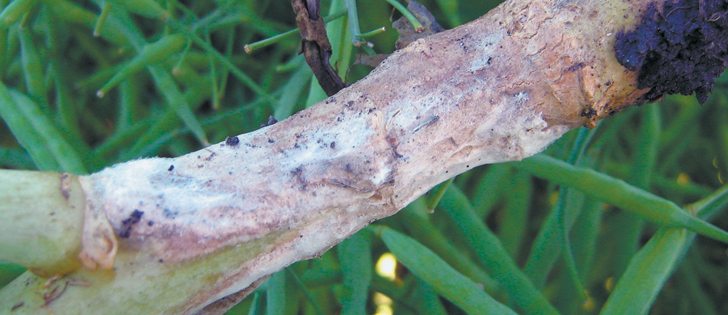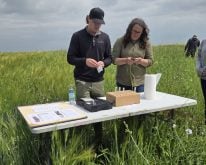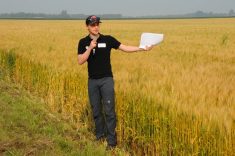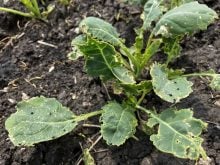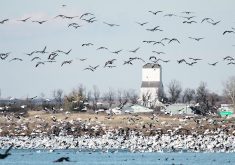This summer was one of the worst for sclerotinia in Manitoba.
A provincial disease survey found that 90 percent of tested canola fields had sclerotinia stem rot and in infected fields, about 15 to 20 percent of canola plants had symptoms of sclerotinia.
However, the real story of 2016 was disease severity.
On a scale of zero to five, with five being the most severe symptoms of sclerotinia, the average severity in Manitoba was 3.2.
“We are quite a bit higher than we have seen for severity,” said Holly Derksen, a Manitoba Agriculture plant pathologist who spoke at the Manitoba Agronomists Conference in Winnipeg earlier this month.
Read Also
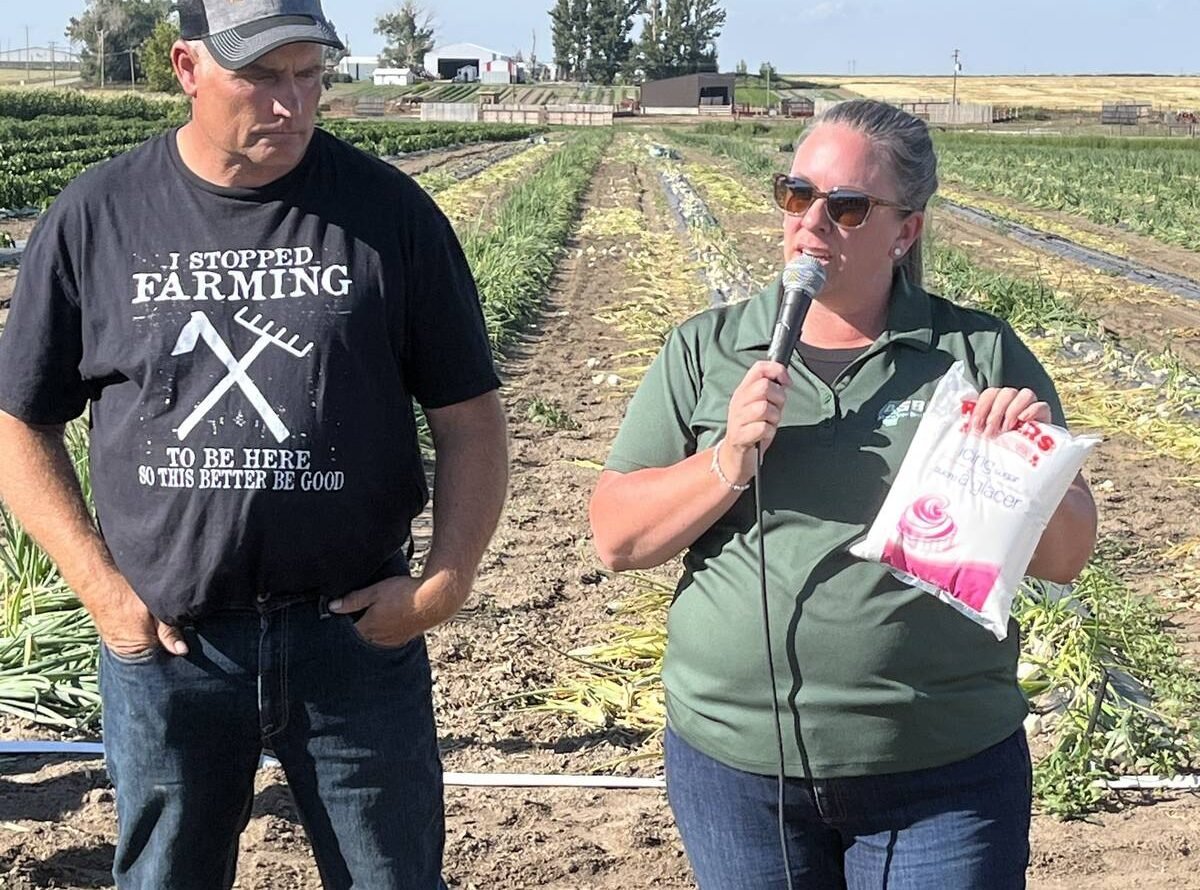
Alberta’s beets a sweet domestic segment in Canada’s sugar supply
The sugar beet industry is showcased during a Farm to Table tour, as Taber features the last remaining sugar beet processing plant in all of Canada.
Derksen defined the severity scale as:
• 2: lesion on main stem or branches with potential to affect up to one-quarter of seed formation and filling
• 3: As above but affecting half of seed formation and filling
• 4: As above, but affecting three-quarters of seed formation and filling
Severity scores have been tracked in Manitoba only since 2011, so it’s impossible to know if 2016 was the worst year for sclerotinia severity in the province.
However, 3.2 does exceed the previous high of 2.6.
Growers obviously sprayed their canola crop with fungicide to control sclerotinia because yields in most regions were decent.
For instance, the average severity in southwestern Manitoba was 3.9, but the province pegged canola yields for the region at 40 bushels per acre.
Nonetheless, the disease definitely added to grower cost and reduced yield.
“Sclerotinia was present in most fields (in the central part of the province) … causing lodging and shattering and yield loss at swathing and harvest.” Manitoba Agriculture said in its final crop report for 2016.
The weather this summer likely contributed to the severe infections of sclerotinia.
The disease flourishes when temperatures before and during canola flowering are cooler — 15 to 25 C — and when there is sufficient moisture in the soil and air.
It’s interesting to know disease levels after the fact, but having information before sclerotinia arrives is much more useful.
Manitoba Agriculture used to operate a sclerotinia forecast model, but the province abandoned the system because it produced inconsistent results.
The province may introduce a different model, and Derksen is considering a system developed at North Dakota State University.
“There is potential to co-ordinate something with North Dakota.”
The NDSU system generates a sclerotinia risk map for the state and a risk calculator for individual farmers.
North Dakota canola growers enter data points to estimate their risk, such as the last time the field was seeded to canola, if sclerotinia was present on the last canola crop, date of planting and type of canola.
For more information, visit www.ag.ndsu.edu/sclerotinia/
Contact robert.arnason@producer.com


